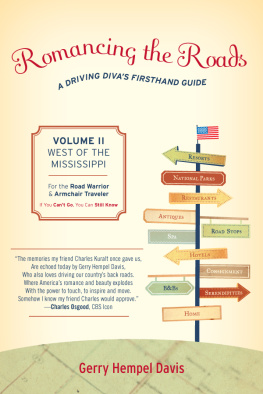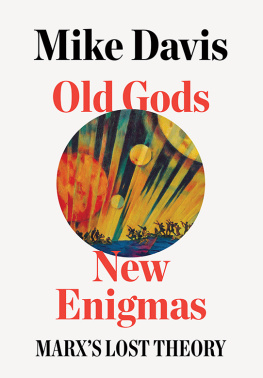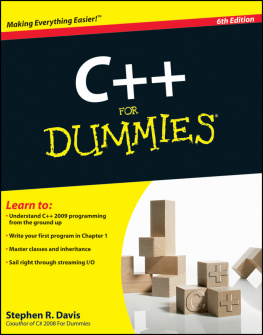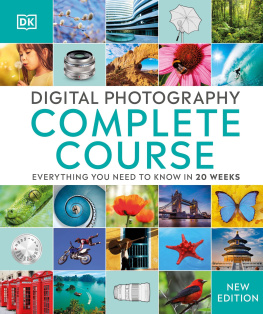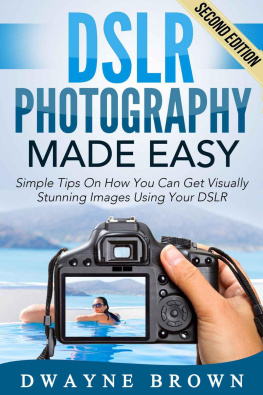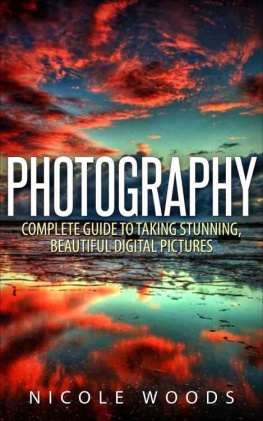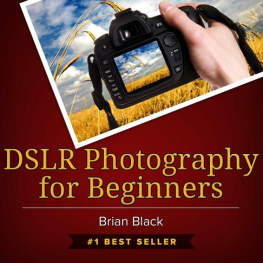Davis - Photography: DSLR photography made easy
Here you can read online Davis - Photography: DSLR photography made easy full text of the book (entire story) in english for free. Download pdf and epub, get meaning, cover and reviews about this ebook. year: 2015, genre: Computer. Description of the work, (preface) as well as reviews are available. Best literature library LitArk.com created for fans of good reading and offers a wide selection of genres:
Romance novel
Science fiction
Adventure
Detective
Science
History
Home and family
Prose
Art
Politics
Computer
Non-fiction
Religion
Business
Children
Humor
Choose a favorite category and find really read worthwhile books. Enjoy immersion in the world of imagination, feel the emotions of the characters or learn something new for yourself, make an fascinating discovery.

Photography: DSLR photography made easy: summary, description and annotation
We offer to read an annotation, description, summary or preface (depends on what the author of the book "Photography: DSLR photography made easy" wrote himself). If you haven't found the necessary information about the book — write in the comments, we will try to find it.
Davis: author's other books
Who wrote Photography: DSLR photography made easy? Find out the surname, the name of the author of the book and a list of all author's works by series.
Photography: DSLR photography made easy — read online for free the complete book (whole text) full work
Below is the text of the book, divided by pages. System saving the place of the last page read, allows you to conveniently read the book "Photography: DSLR photography made easy" online for free, without having to search again every time where you left off. Put a bookmark, and you can go to the page where you finished reading at any time.
Font size:
Interval:
Bookmark:
DSLR

Copyright 2015 by Fred Davis - All rights reserved.
This document is geared towards providing exact and reliable information in regards to the topic and issue covered. The publication is sold with the idea that the publisher is not required to render accounting, officially permitted, or otherwise, qualified services. If advice is necessary, legal or professional, a practiced individual in the profession should be ordered.
- From a Declaration of Principles which was accepted and approved equally by a Committee of the American Bar Association and a Committee of Publishers and Associations.
In no way is it legal to reproduce, duplicate, or transmit any part of this document in either electronic means or in printed format. Recording of this publication is strictly prohibited and any storage of this document is not allowed unless with written permission from the publisher. All rights reserved.
The information provided herein is stated to be truthful and consistent, in that any liability, in terms of inattention or otherwise, by any usage or abuse of any policies, processes, or directions contained within is the solitary and utter responsibility of the recipient reader. Under no circumstances will any legal responsibility or blame be held against the publisher for any reparation, damages, or monetary loss due to the information herein, either directly or indirectly.
Respective authors own all copyrights not held by the publisher.
The information herein is offered for informational purposes solely, and is universal as so. The presentation of the information is without contract or any type of guarantee assurance.
The trademarks that are used are without any consent, and the publication of the trademark is without permission or backing by the trademark owner. All trademarks and brands within this book are for clarifying purposes only and are the owned by the owners themselves, not affiliated with this document.
Introduction
I want to thank you and congratulate you for downloading this book!
All the best tips and tricks on how to use your DSLR camera are in this book. You will definitely be surprised by some of these! After having read this book, you will literally know more than 99% of the camera users out there and you will take amazing pictures.
Fred Davis
Tip #1: What is a DSLR camera?

Here are the major components:
- Lens
- Reflex mirror
- Shutter
- Image sensor
- Matte focusing screen
- Condenser lens
- Pentaprism
- Eyepiece/Viewfinder
Tip #2: How does it work?
Basically, the scene that you are taking a picture of passes through the lens as light into a reflex mirror (#2 from the graph from tip #1), which forwards the light vertically to the optical element called pentaprism (#7). The role of the pentaprism is to convert the vertical light into horizontal by redirecting the light into two separate mirrors ( the viewfinder ). As soon as you take the picture, the reflex mirror (#2) swings upward and this blocks the vertical pathway. This lets the light directly through. As soon as this is done, the shutter (#3) opens up to let the light hit the image sensor (#4). The ways it works is that the shutter (#3) stays open until the light reaches the image sensor (#4). After that, the shutter closes and the reflex mirror (#2) comes back to the 45 degree angle. I know I know...All of this is really complicated but I wanted to explain it to you before we get into actual useful information.
Tip #3: What brand should you buy?

Even if you gave me the best drawing tools available on the market, I would still be terrible. The fact is, it is not only about the tools. You have to know how to use the tools. If you are new to this, even if someone would give you the best camera in the world, probably a professional could take better pictures than you with an average camera. Of course the quality of the camera matters, but learn how to use it too. This is ultimately what matters the most. You cant really go wrong with Canon or Nikon. There are a few things that matters a lot: the sensor size, dynamic range, depth field, viewing angles...
Tip #4: Understanding ISO

What is ISO? Camera ISO is one of the three pillars of photography (with Aperture and Shutter speed). Basically, ISO is the level of sensitivity of your camera to available light. The lower the ISO, the less sensitive the camera is to the light. The higher the ISO, the more your camera is sensitive to the light. Every camera has what is called an Image sensor with which you can change the ISO.
The image sensor is probably the most important component of your camera as it is what gather the light and converts it into an image. When you increase the ISO of your camera, your sensor will be able to capture images in low light environments much better (often without a flash). The only downside with a higher sensitivity is that it adds noise to the picture. That being said, pretty much every camera has what is called Base ISO, which is the lowest ISO number of the sensor that will produce the highest quality of image, without adding any noise to the picture. To take high quality picture, select the base ISO. The only time you should put a higher ISO is in a low light environment.

Tip #5: Understanding Aperture


The higher the f/stops, the less esposure. This is really important because Aperture has the power the blur the background or brings everything in focus. The size of the Aperture has a direct impact on the depth of field, which is the part of the image that is sharp.
Tip #6: Understanding Shutter speed

What is Shutter speed? Shutter speed is responsible for either freezing action or blurring motion. Basically, a camera shutter is a curtain in front of the camera sensor that stays closed until the camera fires. As soon as the camera fires, the shutter opens and it fully exposes the camera sensor to the light that passes through the lens Aperture. When the sensor is done collecting the light, the shutter closes. The bottom that fired the camera is called ``shutter`` because it is this bottom that control the shutter to close or open.
Now, shutter speed means the length of time a camera shutter is open to expose light. A fast shutter speed means it can freeze action completely. A slow shutter create an effect called ``motion blur``.
Font size:
Interval:
Bookmark:
Similar books «Photography: DSLR photography made easy»
Look at similar books to Photography: DSLR photography made easy. We have selected literature similar in name and meaning in the hope of providing readers with more options to find new, interesting, not yet read works.
Discussion, reviews of the book Photography: DSLR photography made easy and just readers' own opinions. Leave your comments, write what you think about the work, its meaning or the main characters. Specify what exactly you liked and what you didn't like, and why you think so.


